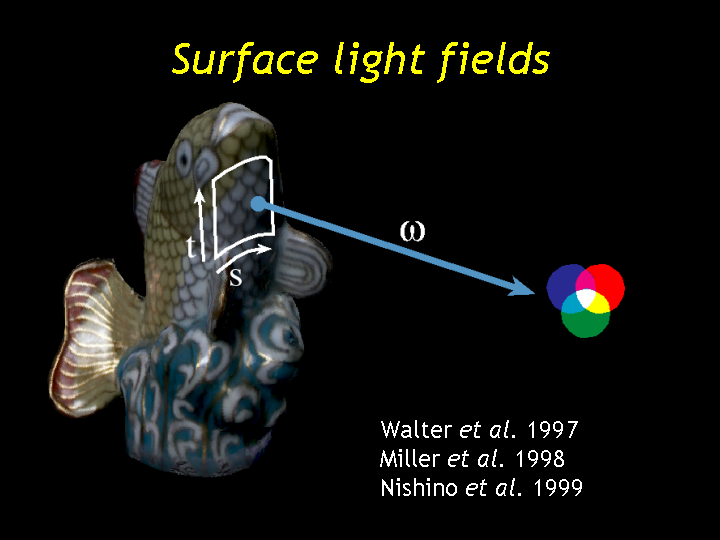
| PREVIOUS | NEXT |
| INDEX | |

Both of these techniques keep image and geometric data separate. A surface light field (SLF), on the other hand, binds them tightly together. A SLF requires parameterized geometry and then encodes for every point on the surface and every direction (omega) the radiance leaving that point in that direction.
Walter et al and Miller et al have used these to store pre-computed global illumination solutions. Nishino et al have done some related work in the 3D photograph realm. Among other differences with our work, the Nishino et al approach requires a particular configuration of input images and does not address interactive rendering or editing. (See the paper for a more in-depth analysis of the related work.)